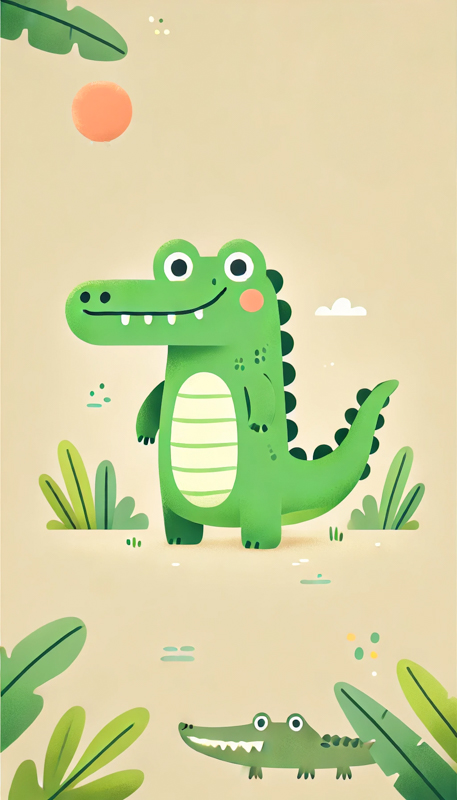
The kanji for “鰐” is called “wani” in Japanese. The “魚” radical on the left side means fish or aquatic creature, and the “咢” radical on the right side is the part that represents a large mouth. This combination represents a crocodile that lives near water and has a distinctive large mouth. In English, it is equivalent to “crocodile” or “alligator,” but in Japan it is commonly written as “鰐” without any distinction between crocodiles and alligators.
This kanji is very old and appears in the “Nihon shoki (Chronicles of Japan)” compiled in the 8th century, so it can be said to have a long history.
Although it is rare to keep crocodiles in Japan, some people actually keep them as pets. However, crocodiles are very powerful, and on rare occasions they escape, often making the news.
「鰐」( wani )という漢字は、日本語で「ワニ」と呼びます。左側の「魚」偏は魚や水生生物を意味し、右側の「咢(あく)」は大きな口を表す部分です。この組み合わせで、水辺に生息し、特徴的な大きな口を持つワニを表現しています。英語では「crocodile」や「alligator」に相当しますが、日本ではワニの区別をせずに「鰐」として表記されることが一般的です。
この漢字は非常に古く、8世紀に編纂された「日本書紀」にも登場しており、長い歴史を持つ漢字と言えます。
日本ではワニの飼育は珍しいですが、実際にペットとして飼っている人もいます。しかし、ワニは非常に力が強く、まれに逃げ出してニュースになることも少なくありません。